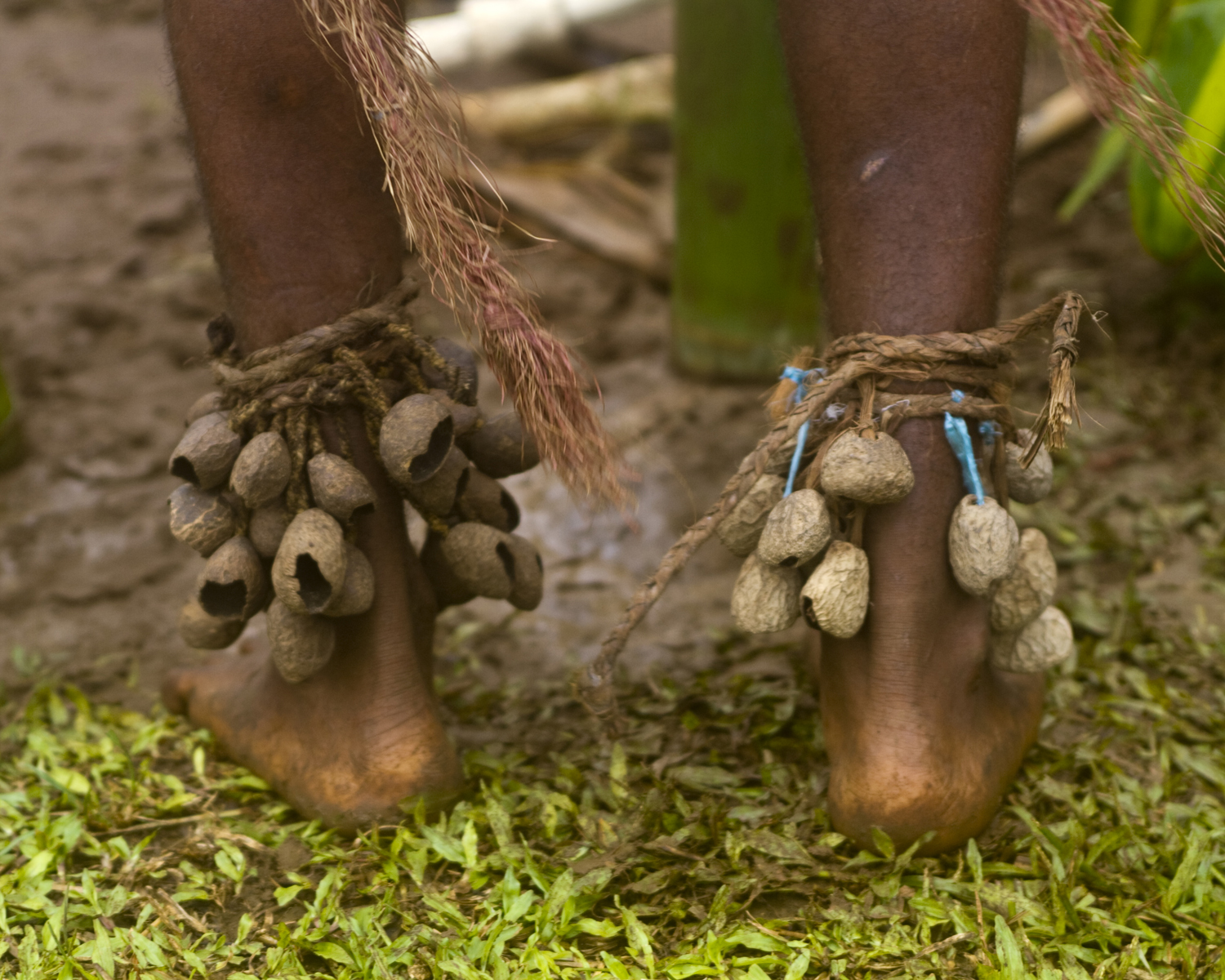“Early the next morning we were once more on our way into the Big Numbers territory. Martin pressed my hand. We were both thinking of that other time. Today there were thirty-one of us. Four white men, twenty-six trustworthy natives and myself, all armed with repeating rifles and automatic pistols. We anticipated no trouble, but our boys were skeptical of the worth of our optimism and plainly frightened by these notorious cannibals. Our carriers held back when we reached the beach. They feared ambush in the jungle.
“We finally persuaded them to continue, and, equipped with photographic apparatus, trade-stuff, and food, we plunged up the trail.”
—From I Married Adventure by Osa Johnson, 1940
I’ve done enough of these touristy “let’s-go-visit-a-native-village” trips to be leery. What you usually get is some Disneyfied group of locals dressed up in costumes they normally wouldn’t be caught dead in who then perform a few dances and sing a few songs before bringing out the trinkets they hope you’ll buy.
But the village of Vil-Vil was different. First of all, this was no tarted up tourist attraction. It was a few rudimentary shacks made from bamboo poles and rough-cut coco wood with thatched huts spread out around a cleared space in the jungle that was half mud and half grass. On the parameters of the village were little garden plots for cultivating a few banana trees, pawpaws, and patches of piper methysticum—better known as kava.
When we finally arrived, in a light drizzle, there were no guitar players strumming Isa Lei, as you’d get in Fiji, or winsome lasses in coconut bras stringing plumeria leis over our heads, ala Hawaii. In fact, about the only activity I noted when I crawled out of the van, seasick from our tortuous ride, was that of the jungle chickens picking at the grass for insects. And then suddenly a handsome, smiling man, barefoot and bare-chested, wearing a dyed-grass loincloth and ankle rattles, called vivangs, came out of one of the huts to greet us. This was the chief of the village, Bule Kone.
I liked Bule Kone immediately. He was both inquisitive about where we were from (“Ah…America. We like America very much. We still remember from the War when you came to protect our islands.”) and straightforward and open about explaining his culture (when I told him I’d read that young ni-Vanuatu girls have no say in who they marry, he smiled and said, “Yes, in our village, this is the custom”).
Then several young men came out of the village long house, known as the nakamal, the men’s-only lodge where village adolescents spend their teen years learning culture and religion (and how to be enlightened through kava), and there was some dancing in the mud and beating of the boo-boos, as Osa Johnson called them, and singing, all of it a bit insipid. Half way through the butterfly dance, I wandered off and started taking photos of three little girls who were radiantly beautiful and so shy it almost broke my heart. The rain started to come down a little harder but the men went on stomping their feet in the mud, their vivangs rattling around their ankles, the drummers rhythmically pounding hollow logs with sticks. The whole thing was both fascinating and dispiriting to me and, even still, I’m not sure I could tell you why. Only that it made me uncomfortable.
-
The girls are beautiful. Maybe uncomfortable because the freedom we have here is not the same for them. But there culture works for them, and change is something they have not succumbed too. Or I could be wrong and it was just there drumming was awful perhaps.
Smiles
-
You’re right, the little girls are incredibly beautiful. But they are definitely treated like second class citizens (their fathers trade them in marriage for pigs).
Comments are now closed.



2 comments